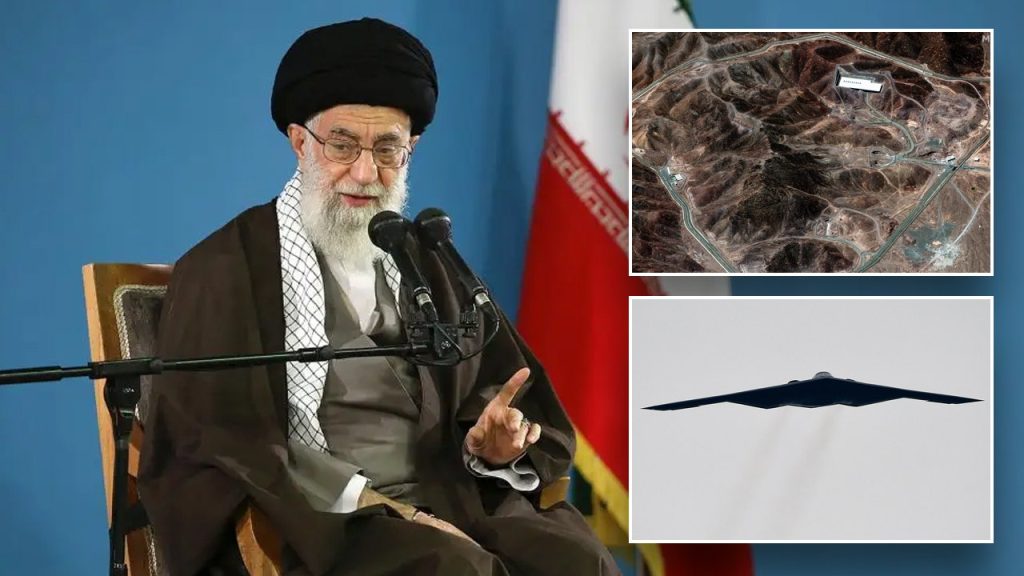As tensions continue to rise between Israel and Iran over nuclear capabilities, military analysts are keenly focused on the Fordow nuclear facility, which remains untouched despite ongoing threats. Nestled two hours from Tehran, Fordow is highlighted as a significant point of concern, potentially capable of producing a nuclear warhead in just a few days. With experts asserting that the U.S.’s 30,000-pound GBU-57 bunker buster may be the only effective solution to neutralize the threat, discussions about military options intensify.
| Article Subheadings |
|---|
| 1) Understanding Bunker Busters |
| 2) Assessing the Required Munitions |
| 3) Capability of Israeli Forces |
| 4) Differing Military Objectives |
| 5) Broader Implications for Regional Stability |
Understanding Bunker Busters
Bunker busters are specialized military munitions designed to penetrate fortified structures like those at the Fordow facility. These weapons utilize the force of gravity to dig through layers of earth, rock, and concrete before detonating underground. Jonathan Ruhe, Director of Foreign Policy for the Jewish Institute for National Security of America (JINSA), emphasizes that the explosion can either fully destroy a target or cave in its surrounding structure, effectively neutralizing any threats.
Bunker busters come in various weight classes, with the U.S. holding exclusive access to the GBU-57 A/B Massive Ordinance Penetrator (MOP), weighing a staggering 30,000 pounds. This device was developed during the administration of former President George W. Bush specifically for deep-set targets such as Fordow, where crucial assets are buried far beneath the surface.
Assessing the Required Munitions
Determining the number of bunker busters necessary for a successful strike on Fordow hinges on the facility’s depth. Estimates indicate that the site is located approximately 60 to 90 meters (196 to 295 feet) below ground. In contrast, the Director General of the International Atomic Energy Agency (IAEA), Rafael Grossi, recently claimed it can extend as much as 800 meters underground. These conflicting reports bring into question the viability of conducting airstrikes against the facility.
Ruhe speculates that while the MOP can penetrate a depth of 200 feet, the Fordow site’s complexities would require multiple sequential strikes. This tactic, known as “burrowing,” could see a bomber dropping several MOPs consecutively. Given the geographical challenges, the U.S. military might employ advanced strategies to ensure successful penetration.
Capability of Israeli Forces
The debate about whether Israel can effectively neutralize the Fordow facility has become heated. Observers like Mark Dubowitz, CEO of the Foundation for Defense of Democracies, assert that only the U.S. possesses the capability to truly destroy such a fortified location. Despite Israel’s proven military prowess, experts believe a targeted strike may yield limited success.
Ruhe continues to express confidence in Israel’s tactical innovation and suggests that there are alternative strategies to using the MOP. One such option might be for Israel to deploy its F-15 jets, escorted by F-35s, to drop multiple 5,000-pound bunker busters. While this tactic poses a significant risk and challenges, it may still achieve lower levels of success than U.S. capabilities due to resource and technological constraints.
Differing Military Objectives
There are crucial distinctions between U.S. and Israeli objectives in targeting Fordow. According to Ruhe, U.S. military goals are often aimed at total obliteration of such facilities. In contrast, Israel may focus on delaying Iranian nuclear operations for a limited time. Israeli officials might be satisfied with outcomes such as disrupting power sources for centrifuges rather than destroying the entire facility.
He further notes that while the defense strategies may differ, Americans and Israelis share a common objective: preventing Iran from achieving nuclear weapons capability. Analysts believe that even a temporary halt in operations at Fordow could disrupt Iran’s nuclear timeline significantly, providing a crucial buffer in international tensions.
Broader Implications for Regional Stability
The continuing standoff around the Fordow facility holds broader implications for regional stability and global security. Israel has experienced some success in targeting other components of Iran’s fuel cycle, such as sites in Natanz and Isfahan. However, as Ruhe concludes, the Fordow facility serves as a critical component in Iran’s potential nuclear advancements, and its viability must be assessed in a broader context.
In a scenario where military force is deemed necessary, the consequences could ripple through the region, impacting both national and global security dynamics. As these nations navigate their complex relationship, the weight of their decisions carries significant repercussions for the future.
| No. | Key Points |
|---|---|
| 1 | Fordow is a critical site for Iran’s nuclear capabilities. |
| 2 | Bunker busters are the preferred munitions for targeting fortified sites. |
| 3 | The U.S. holds exclusive access to the powerful GBU-57 bunker buster. |
| 4 | Israeli military strategies differ from U.S. goals when addressing Iran’s nuclear threat. |
| 5 | Military actions against Fordow could have regional and global consequences. |
Summary
The situation surrounding Iran’s Fordow nuclear facility presents significant challenges for both Israel and the U.S. As military analysts evaluate options for potential strikes, the distinctions in objectives between the two nations further complicate the discourse. While the use of bunker busters, particularly the massive GBU-57, remains a focal point, the broader implications of military action must also be weighed carefully to avoid destabilizing the region.
Frequently Asked Questions
Question: What makes the Fordow facility significant?
The Fordow facility is significant due to its potential capability to enrich uranium for nuclear weapons, critically impacting global security dynamics.
Question: Why are bunker busters important in military strategy?
Bunker busters are designed to penetrate fortified structures, allowing military forces to effectively neutralize high-value targets located underground.
Question: What are the risks associated with military action against Iran?
Military actions against Iran could lead to escalating tensions in the Middle East and result in broader conflicts involving various regional stakeholders.
